Knots and tying knots
Many activities introduced in this textbook require the knowledge of basic knots. Tying knots was popularized by F. A. Elstner (1991). In his book we can find inspiration to tying and using knots. For tying there are used ropes, cords, strings, lines, threads, slings, sheets, etc. These words are partly overlapping and their meaning is later interchanged in the text. Cords are usually textile ropes of a small diameter and shorter length. Ropes are tied together from thin fibres. They have high solidity in pull and good flexibility in all directions. They can be textile or iron. Strings are wounded or spliced lines, threads, fibres of a small diameter (up to 6 mm). Threads are used for wrapping objects and are tied from fibres or ribbons. A sling is a term used in the mountaineering community for labelling short pieces of ropes, strings or straps, which are used in belaying techniques and self-belaying.
We introduce knots used for tying persons and objects, anchoring, knots for strengthening a rope and a move on the rope. To understand the knot terminology it is necessary to distinguish the loop, the bight, and the overhand knot. The loop can be according to the working rope end the underhand or the overhand. The working end is the strand which goes from the knot or is manipulated. We should remember the general rule that the working end coming from knots should be as long as ten times of the rope diameter. The second end is standing. The knot which is tied in the right way does not untie. After being loaded it should untie easily. A knot should have all strands next to each other, it holds better then.
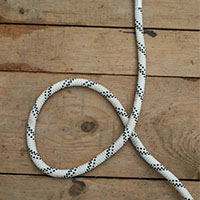 |
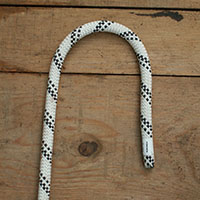 |
| Loop | Bight |
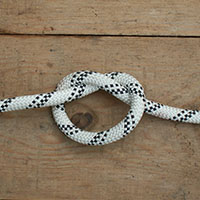 |
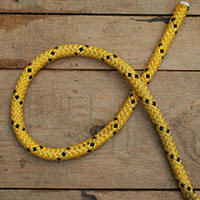 |
| Overhand knot | Underhand loop |
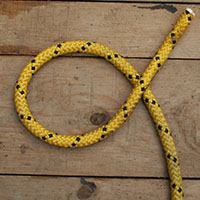 |
|
| Overhand loop |
